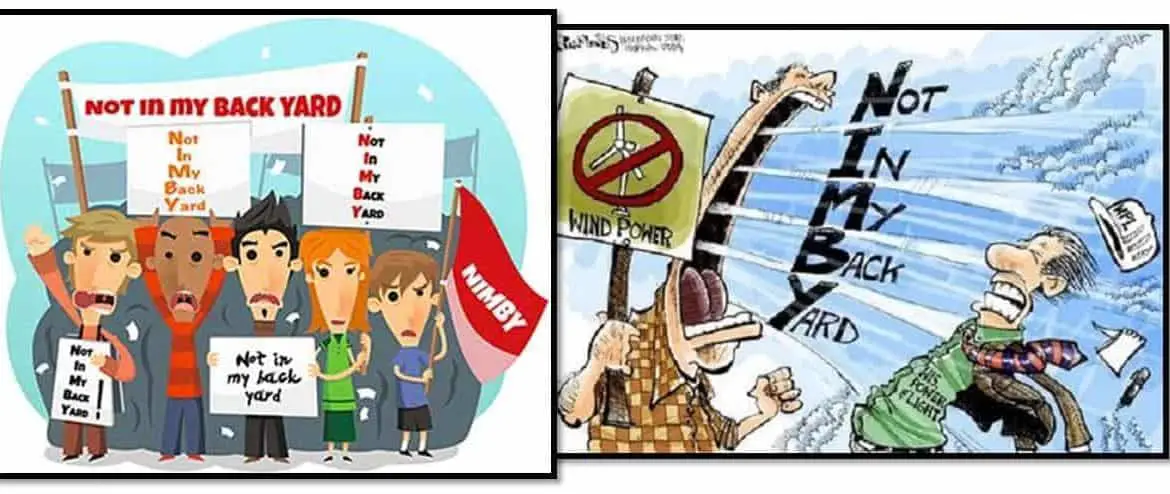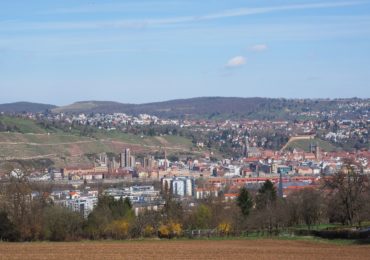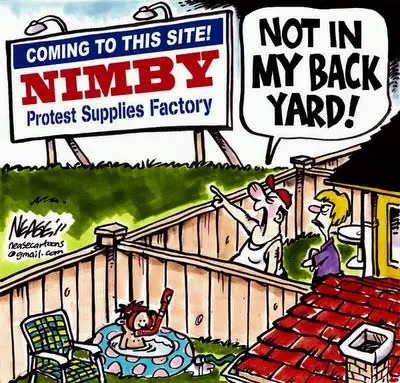Opposition by Locals – The Origin of “NIMBY”
NIMBY (Not In My Back Yard) is a widely used but lesser known acronym. Used by residents of an area and the concerned development agencies. This term is believed to be first used in 1980 in the Christian Science Monitor, an international news organization however its use in hazardous waste industry is considered to be much older. Different versions of this word were used to people convey the same message/ reaction, opposing or expressing objection to the development in their backyard or immediate surroundings. The proposed development might be as close as in one’s backyard, in nearby open space or in the locality.

Nimby as a noun is “a person who objects to the siting of something perceived as unpleasant or hazardous in their own neighbourhood, especially while raising no such objections to similar developments elsewhere.”
The use of this term became popular after 1980s and since then it is used in many parts of the world like Canada, United Kingdom, Hong Kong, California, Italy, japan, united States to name a few. Those showing NIMBY reaction are often referred as Nimbys and their state of mind is called Nimbyism. Sometimes it is also referred as natural psychological phenomenon to resist change or development.
The Rationale Behind NIMBY
This term in general sense is used by residents of an area where some form of development takes place which possesses potential threat to them. The project can be private or government like developing landfill site, airport, shopping mall, new housing, youth hostel, factories, chemical industry, road, wind turbines, hospital, power plant etc.
There are no fix set of land use, activity or development which is opposed, anything which the residents of an area believe can be problematic for them is discouraged by them. This is acceptable to a certain extent in some cases but studies have shown that some adverse effect on development because of this. NIMBY reaction also resulted in formation of groups and NGOs which tried to convince people opposing the development activity.
Development which gets a NIMBY reaction may or may not be actually problematic or dangerous for the residents. The uncertainty or lack of clarity hampers many of the developments which are essential for the overall social development. Those opposing agree that such facility is important but still want it to be developed further away from them. The NIMBY reaction might be towards the project or even because of the method followed.
Related Articles: What is Counter Urbanisation?, Satellite City | Meaning, Characteristics, & Examples
Typical Examples of NIMBY Reaction for Different Projects:
Airport – Everyone will agree to the fact that the construction of airport is necessary. As the world progresses the preference for air travel has increased yet when it comes to locating an airport, mixed reactions is received. Some wish to be located near airport as it will provide connectivity and increased land prices, better facilities etc but at the same time Nimbys will highlight the negatives like noise, pollution, height restrictions and traffic it will generate.

Landfill Sites & Industries – Waste generation in urban areas is a daunting issue with no seemingly solution other than dumping a major part of waste to landfill sites. This results in huge piles of garbage which can be seen from large distance. No one will like to live near a landfill site or industries because of the filth, smell, potential skin problems and other diseases.

Power Plants – Electricity is vital for nearly all activity in an area yet the power plants are located far away from the residential area. Although the concerned departments try to locate them away from populated areas but some people who live near the proposed site opposes it. Pollution and fly ash from coal based power plants, radiations from nuclear power plants, other health risk from nuclear power, noise, displacement of people because of hydro power plants etc remains the prime reason for opposition. Wind farm, natural gas, and other renewable energy projects are also discouraged.

Housing – This might sound puzzling but new construction also faces opposition. Residents does not want new housing units or group housing as they believe that the quality of life for them will deteriorate. New residents will also share the same resources which will decrease the utility for existing residents. Low cost housing near high income housing often faces NIMBY reaction. Increased crime rate, concern about cleanliness, unlawful activities adds to the concern of people. Such reaction is also believed to result in housing shortage and develop a inhumane attitude towards homeless person, many groups and NGOs came forward to spread awareness about the problems cause because of NIMBY in United States.

Hospital – A must and basic facility in an area often faces criticism at time of construction by some. This is due to the assumption that the diseases from the patients coming for treatment might spread. Some express concern over the way waste is handled by the hospitals as the harmful microbes might spread if waste is not disposed properly.
Waste Management – Proper disposal of solid waste or municipal waste is important for an urban area. Waste management is particularly important in case of big cities. This require waste segregation facilities, landfill sites, dumping grounds etc. Such structures are opposed by people living near these proposed utilities.
Other Infrastructure Development – Apart from the developments discussed above, urban development requires many more type of infrastructure to be developed. This include transmission lines, group home, subsidized housing, homeless shelters, apartment buildings etc.
How to Deal with NIMBY Reaction?
Urban planners, managers, mayors, development authorities often face this reaction and find it hard to implement the project. It is necessary for them to provide the residents with the required and correct information. Factually correct information helps in gaining the trust of people and they realize the importance of the project. Increased awareness also helps in prevention of such reaction. In some cases NIMBY reaction is not natural and there exist some vested interest of some individuals who spread misleading information among residents. In this type of cases it becomes must to get the clear picture of happenings and provide correct information to affected people. Governments have special power and authority to carry out its work but they might get stuck as people have right to oppose them and appeal in courts, so to keep the process trouble-free for everyone it becomes imperative to keep everyone informed.
Losses Due to NIMBY
A small opposition always exist due to one of the other belief of people or some bad experience. NIMBY does not cause much damage unless it is supported by large number of people who brings development to stand still. Continuous and frequent opposition to development might even slow down the development process and hamper the growth of a city. Because of prolonged objection and delay in completion of projects investors start moving to other areas which are more promising. NIMBY reaction thus can prove to have adverse and undesirable effect on an area. Due to widespread, frequent obstruction, in some cases to get advantage and attract investment YIMBY (Yes In My Back Yard) reaction is also seen. This is opposite of NIMBY and tries to address the problems caused by Nimbyism.
Urban Development is highly effected due to this opposition and also effects general election and local elections. Real Estate value also take a hit in many cases. Local residents play an important role in such developments as they deal with local concerns.

A planned instance of NIMBY reaction can result in outflow of investment. This type of incidence occur because of certain individual or group of people which wish to hamper growth in an area or to create a false image of other area being more attractive for investment. Another benefit which one can get by disrupting the project is to tarnish the image of working agency or to portray them as incompetent. Considering the example of roads for linking new areas, a delay or halt in construction will devoid the areas from growth.
Read about: Examples of PPP in transport sector, Primate City, Smart City Concept
Tags: Affordable Housing, New York, Property Values, San Francisco, Nuisance laws, housing development, Planning process, property taxes, housing group, local opposition, nimby movement, environmental justice, social justice, larger community, nimbyism, nimbys, backyard, nimby phenomenon